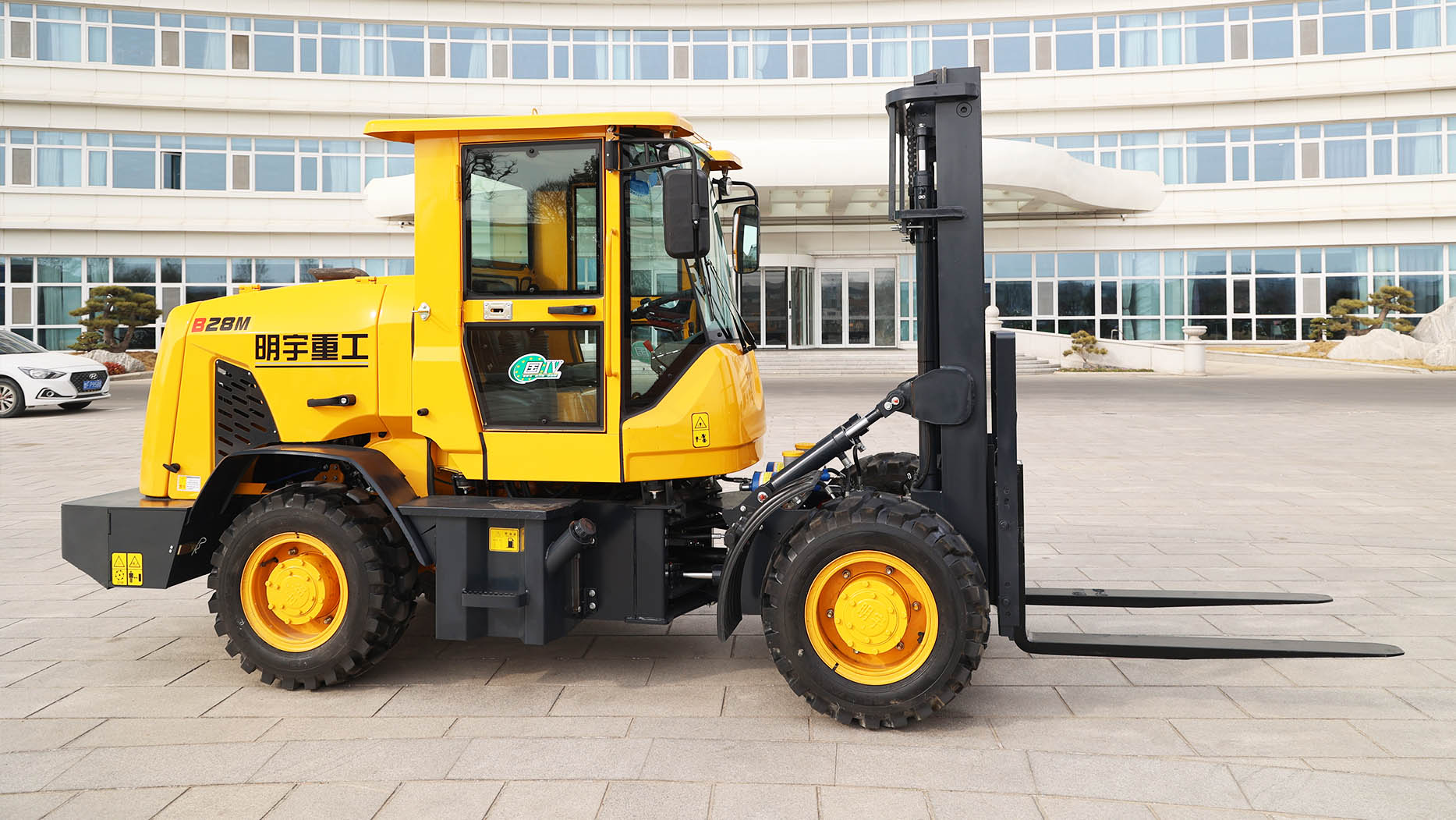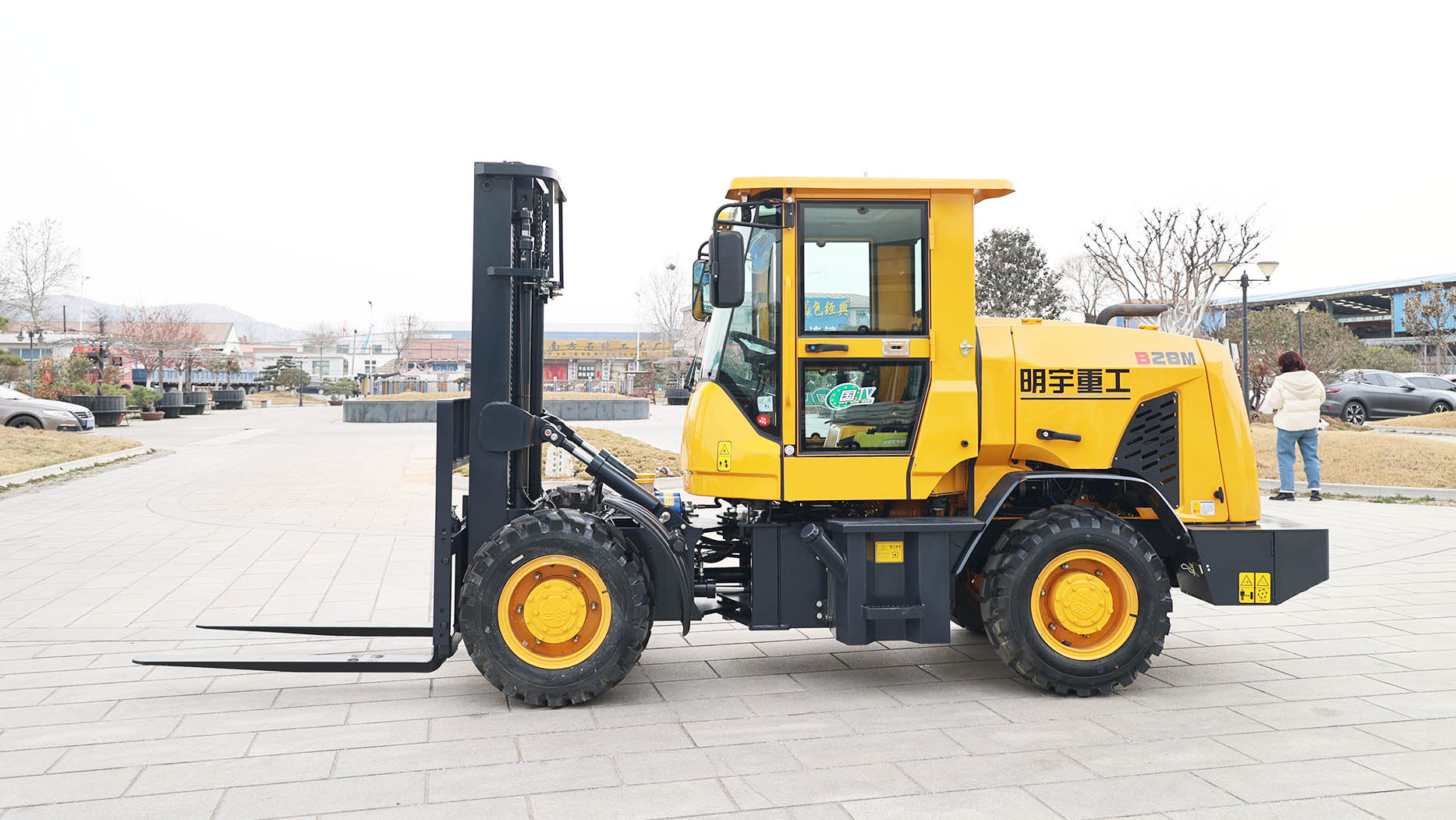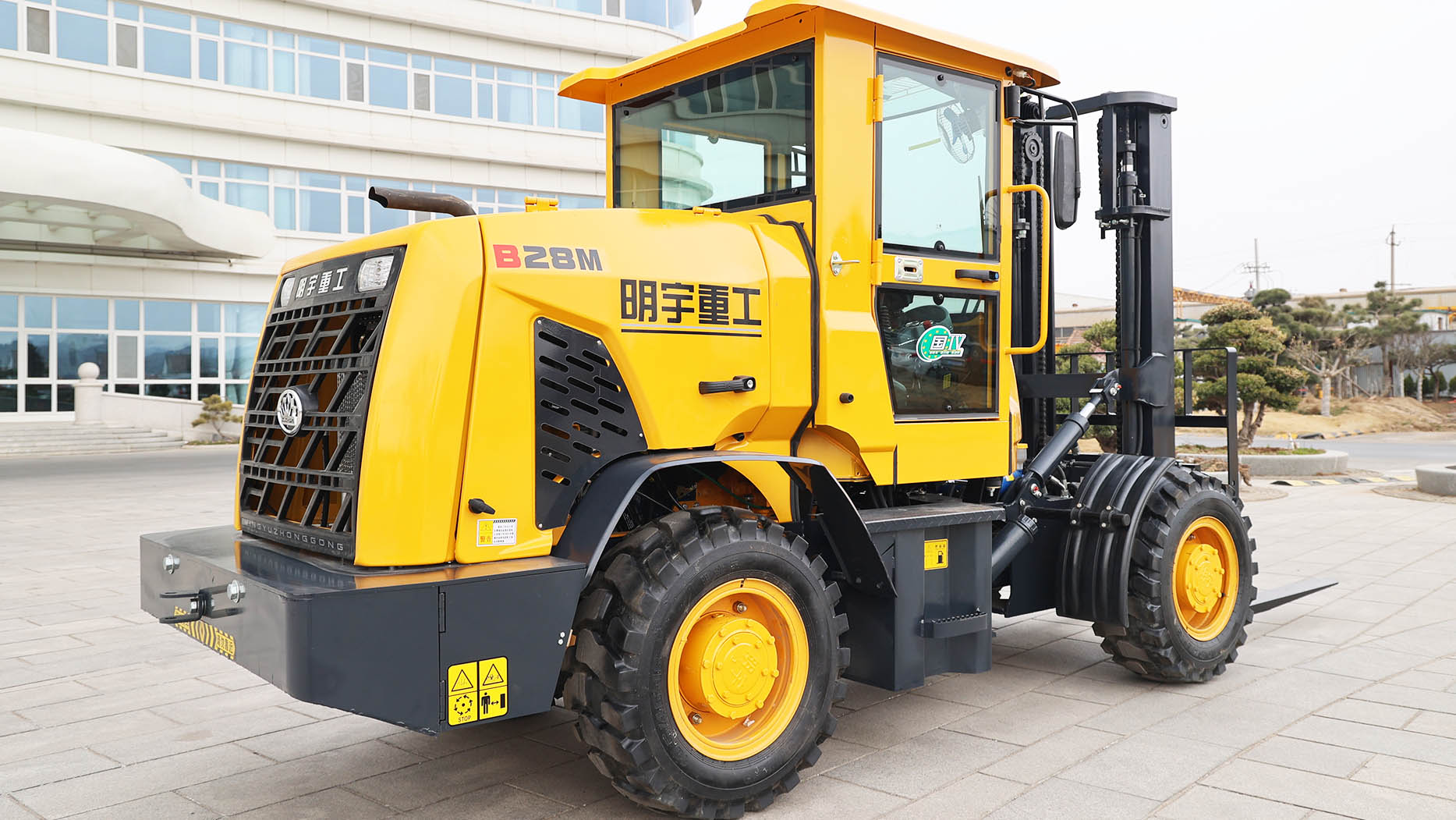For off-road forklifts, tires aren't just an accessory; they're a fundamental component that dictates performance, stability, and safety across challenging landscapes. Unlike their standard warehouse counterparts that glide on smooth concrete, off-road forklifts (also known as rough terrain forklifts) are designed to conquer uneven ground, mud, gravel, sand, and debris-strewn construction sites. The type of tires they are equipped with is paramount to their ability to provide the necessary traction, flotation, and durability in these demanding environments.
Choosing the correct tires for an off-road forklift is a critical decision that impacts not only the machine's efficiency but also its lifespan and the safety of its operators. Businesses looking to purchase a new or forklift second hand for sale need to pay close attention to this often-overlooked yet vital component.
Key Characteristics of Off-Road Forklift Tires
Off-road forklift tires are built differently from standard industrial tires. They are engineered to withstand the rigors of harsh outdoor conditions, prioritizing grip, stability, and resistance to damage.
1. Aggressive Tread Patterns:
The most noticeable feature is the deep, aggressive tread.
Purpose: These large, open lugs are designed to dig into soft surfaces (like mud, sand, and loose gravel) to provide maximum traction and self-cleaning capabilities. They prevent material from getting packed into the tread, maintaining grip.
Comparison to Standard: Standard forklift tires have much shallower, often ribbed or smooth treads, optimized for minimal rolling resistance and even wear on flat surfaces.
2. Robust Construction (Ply Rating and Compound):
Off-road tires are built to be extremely tough.
Ply Rating: They typically have a much higher ply rating (indicating the strength of the tire's sidewall and carcass) than standard tires. This resistance is crucial to prevent punctures and tears from sharp objects common on construction sites or in lumberyards.
Rubber Compound: The rubber compound is formulated for durability and resistance to cuts, chips, and abrasion, even at the expense of wear life on hard surfaces.
Comparison to Standard: Standard tires might prioritize smoother compounds for longer wear life on concrete, where puncture risk is lower.

3. Large Diameter and Width:
Off-road forklift tires are generally larger in diameter and wider than indoor tires.
Purpose:
Increased Ground Clearance: Larger diameters contribute to the forklift's higher ground clearance, allowing it to easily clear obstacles like rocks, ruts, and debris.
Improved Flotation: Wider tires distribute the forklift's weight over a larger surface area, reducing ground pressure. This "flotation" effect prevents the machine from sinking into soft ground, like mud or sand.
Comparison to Standard: Standard forklift tires are smaller and narrower, optimizing for tight turning radii and space efficiency in confined indoor aisles.
4. Pneumatic (Air-Filled) Often Foam-Filled or Solid:
While some very heavy-duty industrial tires can be solid, most off-road forklift tires start as pneumatic but are often enhanced.
Pneumatic Base: Provides cushioning for the operator (reducing fatigue on rough terrain) and better conformity to uneven surfaces, improving traction.
Foam-Filling: Many off-road pneumatic tires are foam-filled. This involves injecting a liquid polymer into the tire that solidifies into a resilient, rubber-like core.
Pros of Foam-Filling: Eliminates flats and downtime due to punctures, maintains constant tire pressure.
Cons of Foam-Filling: Adds significant weight to the tire (and thus the forklift), can increase heat buildup, and is more expensive upfront.
Solid (Non-Pneumatic) Options: Less common for true off-road applications, but some very heavy-duty industrial forklift diesel models (e.g., a large forklift 3 ton diesel used primarily in concrete yards with high puncture risk) might opt for solid tires for ultimate puncture resistance. However, they offer no cushioning and significantly reduce traction on soft ground.
Comparison to Standard: Standard forklifts commonly use cushion (solid) tires indoors for extreme durability and stability, or pneumatic for some outdoor concrete yard use.
 Types of Tires for Off-Road Forklifts
Types of Tires for Off-Road Forklifts
Given the varied challenges of off-road environments, specific tire types are chosen to optimize performance.
1. Standard Rough Terrain Tires:
Characteristics: These are the most common type, featuring a deep, open lug pattern (often chevron or block patterns) for maximum traction on loose and uneven surfaces. They are typically pneumatic and might be foam-filled.
Ideal for: General construction sites, farms, lumberyards, and any environment with varied unpaved surfaces.
Examples: The default choice for a versatile forklift 3 ton diesel operating outdoors.
2. Flotation Tires:
Characteristics: Wider than standard rough terrain tires, with shallower, often more rounded lugs. Designed to maximize the contact patch with the ground.
Ideal for: Extremely soft or sensitive ground conditions like sand, mud, or turf where minimizing ground disturbance and preventing sinking are critical.
Usage: Often seen on lighter off-road forklifts or those operating in agricultural fields and golf courses.
3. Industrial/Construction Tires (E3/L3/G3 Classifications):
Characteristics: These are heavy-duty, bias-ply or radial tires designed for severe service. They offer excellent traction, stability, and cut resistance. The tread patterns are robust, often interlocking block or directional designs.
Ideal for: Quarry work, mining, heavy construction, and recycling centers where extreme abrasion, impacts, and heavy loads are common.
Usage: Common on larger forklift diesel models.
The Impact of Tire Choice on Performance
The right tire choice directly influences several critical aspects of off-road forklift performance:
Traction: Ensures the forklift can move and stop effectively on slippery or loose surfaces, preventing slips and slides.
Stability: Large, wide tires with appropriate inflation contribute to the forklift's overall stability on uneven terrain, reducing the risk of tipping.
Flotation: Prevents the forklift from getting bogged down in soft ground, maintaining momentum and productivity.
Durability and Uptime: Resists punctures and damage, minimizing costly downtime for repairs and replacements.
Operator Comfort: Pneumatic tires and good suspension reduce vibrations and shocks transferred to the operator, leading to less fatigue over long shifts.
Fuel Efficiency: While heavy-duty tires have higher rolling resistance, the ability to operate effectively without getting stuck or spinning wheels ultimately contributes to better fuel efficiency in challenging conditions.
 Key Considerations When Choosing Tires for Your Off-Road Forklift
Key Considerations When Choosing Tires for Your Off-Road Forklift
When selecting a new off-road forklift or replacing tires on a forklift second hand for sale, keep these points in mind:
Dominant Terrain: What kind of ground will the forklift primarily operate on? Mud, sand, rock, gravel, or mixed?
Load Weight and Frequency: Heavier, more frequent loads require stronger, higher-ply-rated tires.
Puncture Risk: If working in areas with sharp debris (e.g., construction waste, scrap yards), foam-filled tires or tires with enhanced puncture protection are highly recommended.
Manufacturer Recommendations: Always consult the forklift manufacturer's specifications for recommended tire types and sizes. Brands like MYZG and MINGYU will specify the appropriate tires for their forklift diesel models, including the forklift 3 ton diesel and mini forklift variants.
Cost vs. Longevity: While higher-quality, more robust tires (e.g., foam-filled, higher ply) have a higher upfront cost, they often offer better longevity and significantly reduce downtime, leading to lower overall operating costs.
Tire Maintenance: Even the toughest tires need proper inflation (if pneumatic), regular inspection for damage, and rotation (if recommended) to ensure even wear and maximize their lifespan.
In conclusion, the tires on an off-road forklift are critical to its specialized function. Unlike a standard indoor forklift, which thrives on smooth surfaces, an off-road forklift relies on aggressive tread patterns, robust construction, and larger dimensions to deliver traction, stability, and durability in challenging outdoor environments. Whether you're looking at a forklift second hand for sale or a new forklift 3 ton diesel model from manufacturers like MYZG or MINGYU, understanding the nuances of tire selection is crucial. The right tires ensure that your powerful forklift diesel can truly conquer any terrain, maintaining productivity and safety, no matter how rugged the job site.
Post time:Jun.30.2025
